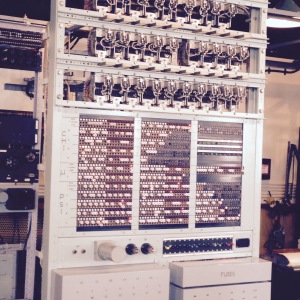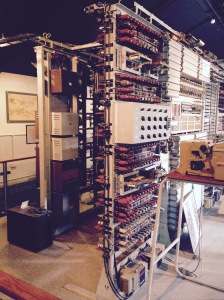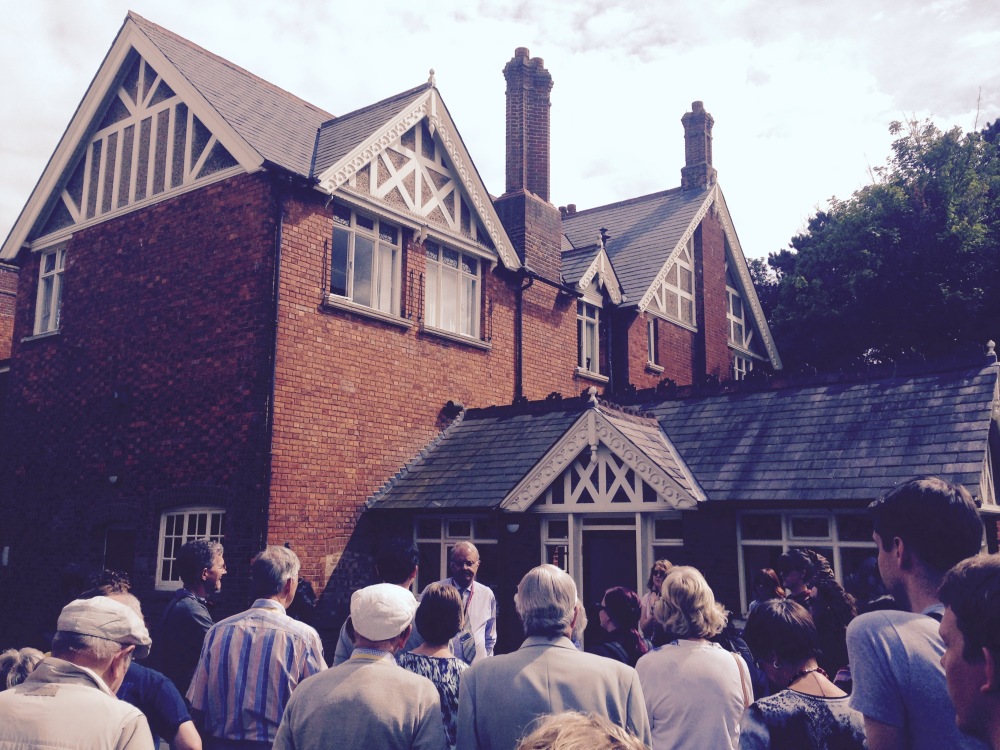The visit to Bletchley Park was our last and to me one of the most fascinating trips on the course schedule. As a die-hard fan of the history around World War II, I found the nature of the Park intriguing in itself. Its history dates back to late August of 1938, when “Captain Ridley’s Shooting Party” arrived at a mansion house in the Buckingham countryside. The “party” were members of MI6 and the Government Code and Cypher School (GC&CS), “a secret team of individuals including a number of scholars turned Codebreakers” (History of Bletchley Park). These individuals were the ones who decided whether the location would be suitable as a wartime base to support intelligence activity for GC&CS and elements of M16. They agreed, inevitably, that it was and thus began the legacy at Bletchley.
Beyond the history of the Park, however, I appreciated the National Museum of Computing. We were introduced to an array of massive computers, including the Electronic Delay Storage Automatic Calculator (EDSAC), started by Morris Wilts in 1949, which is unique in the sense that it is the world’s oldest digital computer still in operation.
This past year I took an Information Technology course for my graduate program at Wayne State University. During the semester, we honed our Microsoft Word, Excel, PowerPoint and Access skills to solve professional problems of practice. In addition, we were introduced to the interactions of computer hardware, software and networks and the history of the computer. Our syllabus states:
The 21st Century library and information professional is faced with an ever-changing environment with new and updated technologies as well as an increasingly tech-savvy patronage. The very existence of libraries depends upon the professionals who work there. Providing information to patrons in a way that is both appropriate and relevant is the key to survival. This course provides the framework for students to understand the important role of technology on the information center, to develop an understanding of the technology lexicon and to confidently adapt to changing technologies. (LIS 6080)
Visiting Bletchley Park and understanding the evolution of the computer was significant to me in that it solidified the global impact of technology and helped me conceptualize where our technology originated. To me, Bletchley Park is one of the “birth places,” so to speak, of what is now such an all-encompassing aspect of everyday life: digital technology.
Technology is also a vital aspect of library and information science. In a previous post, I talked about technology in libraries, explaining:
If society is embracing technology and the use of social networking platforms, blogging, microblogging, image sharing, audio, and cloud computing, so must the library. Not only will the library’s involvement in these technological mediums help it stay relevant to the population it serves, it will further stretch its range of resources and services to its community. (A Sandbox of Technology)
The purpose of technology has always been to solve problems and providing humans with information, whether that be in the context of a war torn country or a public library.
Breaking Enigma and massing together an industrialized workforce of math-minded codebreakers and computer technology had a vital impact on winning the War. “Breaking into these ciphers” Bletchley Park’s website explains, “allowed the Allied staff planning for the invasion of Europe to obtain unprecedented detail of the German defences” (History, Strategic Cyphers). The purpose of technology has been to provide humans with information. Now, in the 21st century, information professionals continue to utilize computer technology to better serve the community around them.

Bletchley’s Polish Memorial, commemorating “the [prewar] work of Marian Rejewski, Jerzy Różycki and Henryk Zygalski, mathematicians of the Polish intelligence service, in first breaking the Enigma code. (Wikiwand)
Resources:
History of Bletchley Park. (2015). Retrieved from http://www.bletchleypark.org.uk/content/hist/
LIS 6080. (2013). Retrieved from http://slis.wayne.edu/profiles/6080.pdf
A Sandbox of Technology. (2014). Retrieved from https://danaemariejournal.wordpress.com/2014/12/01/a-sandbox-of-technology/








